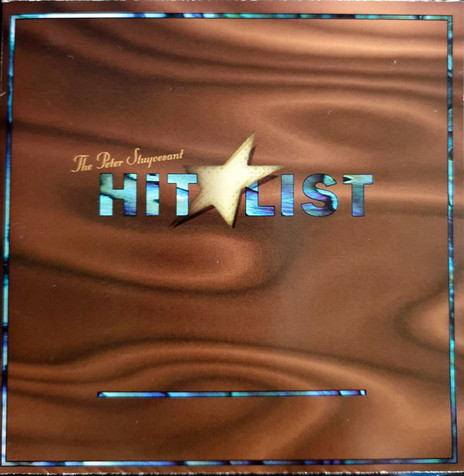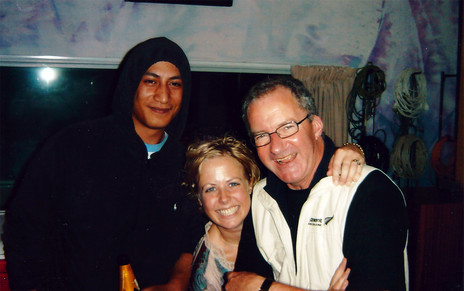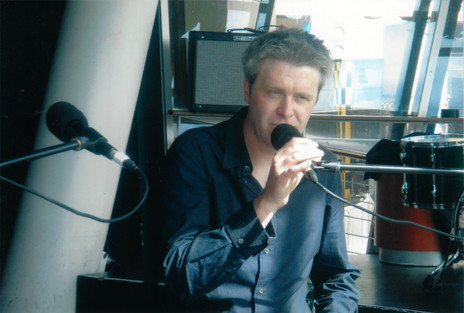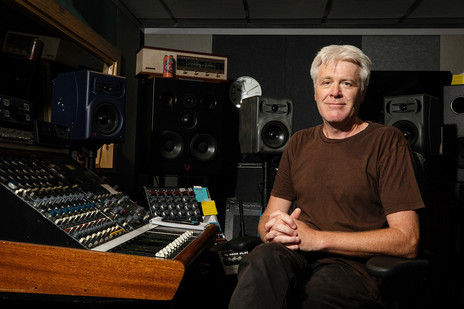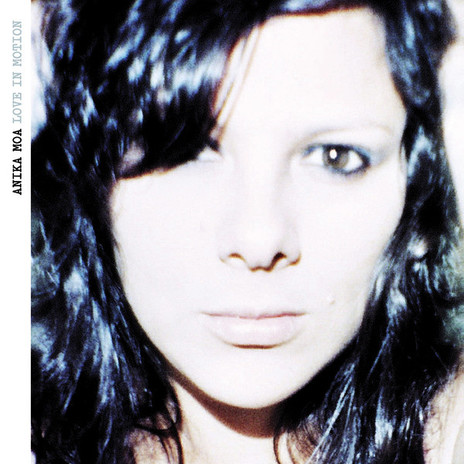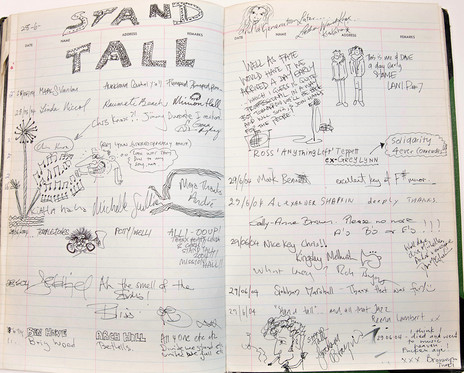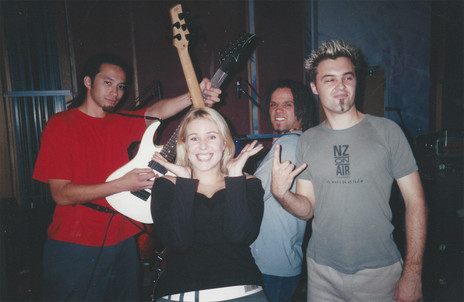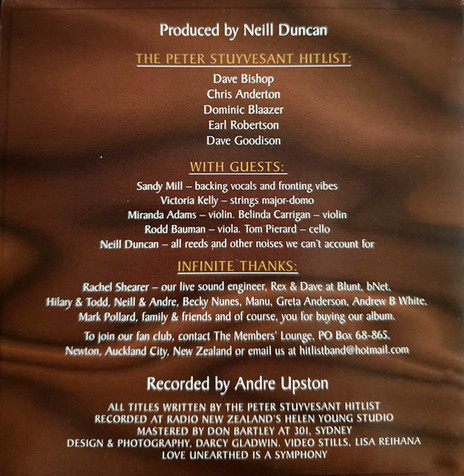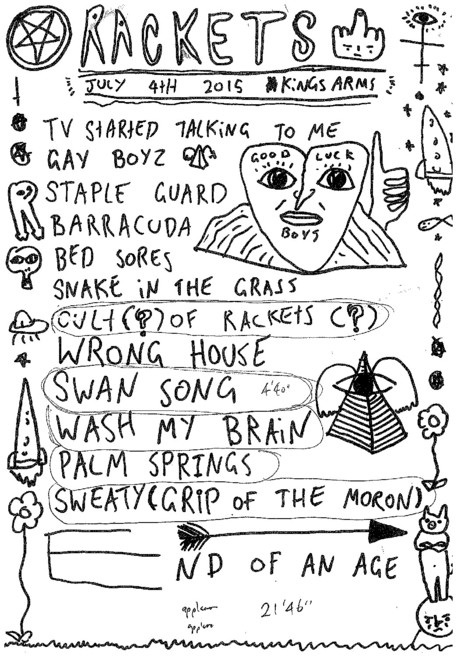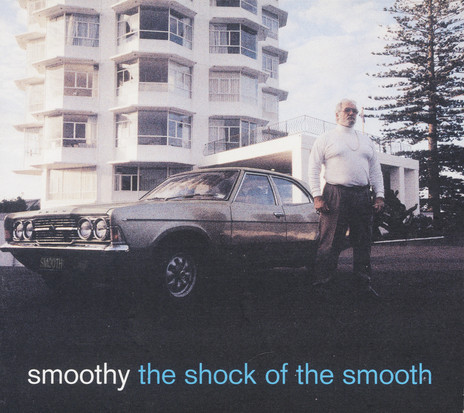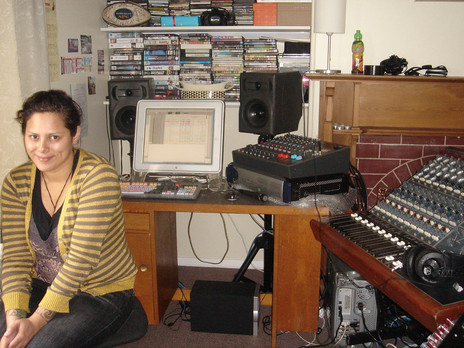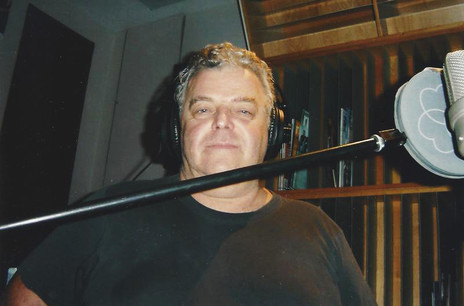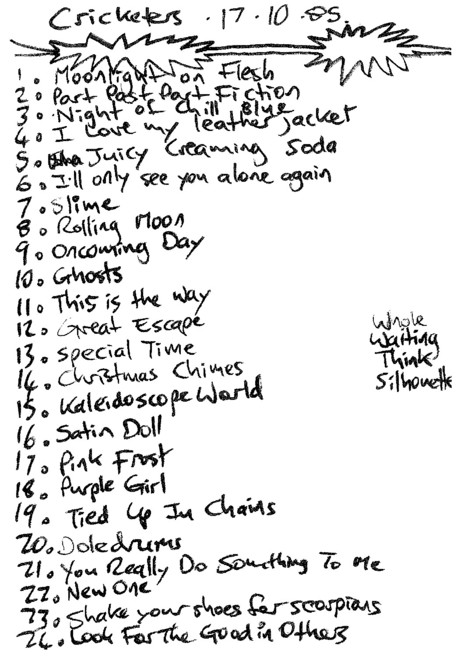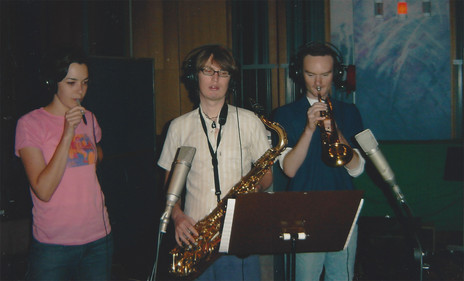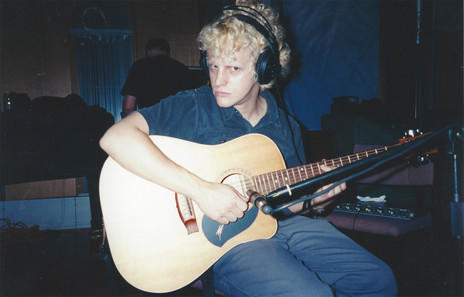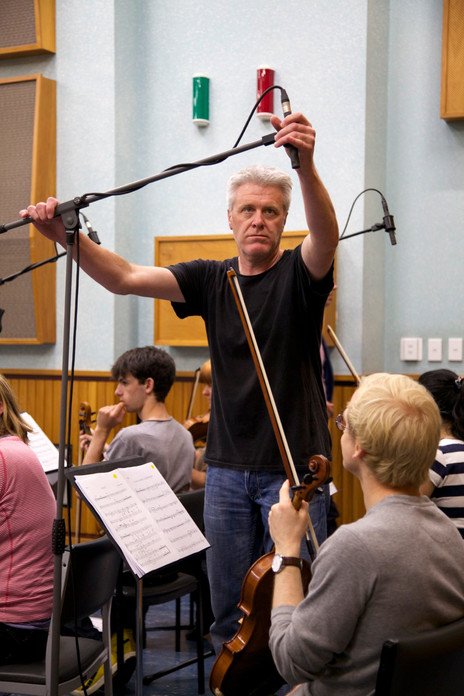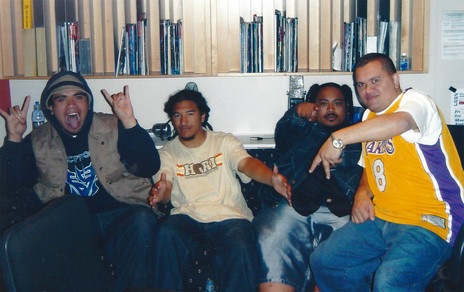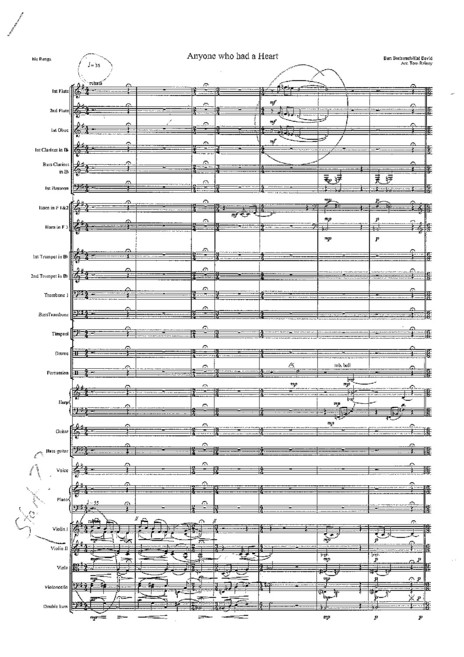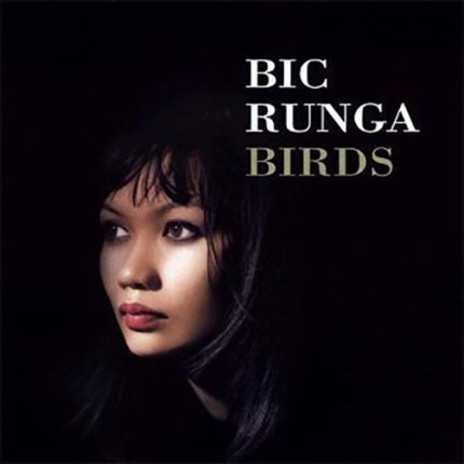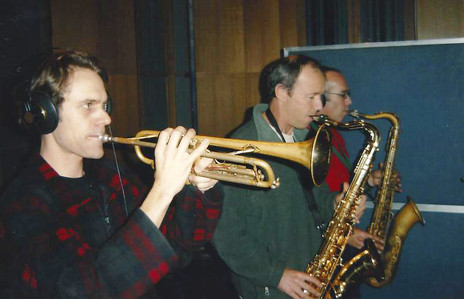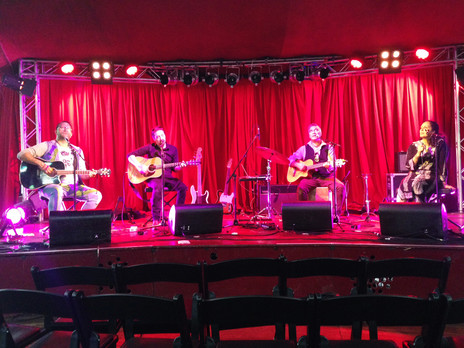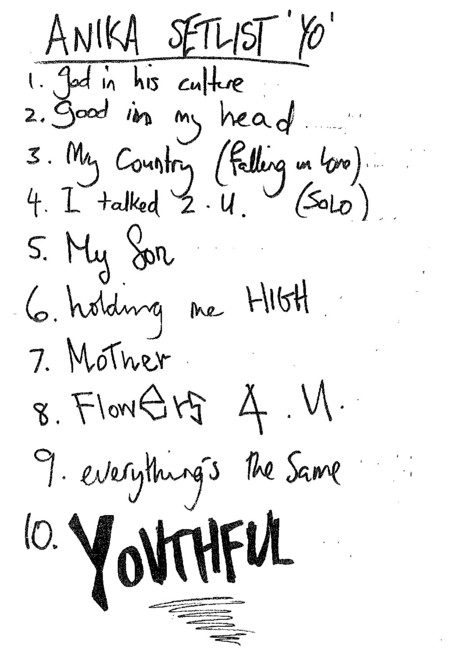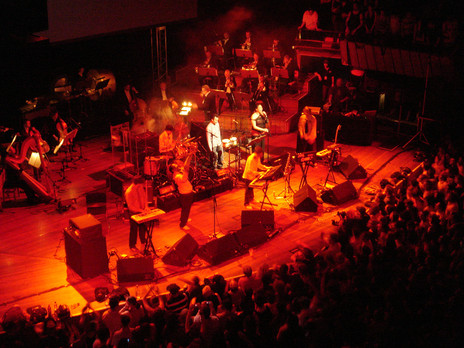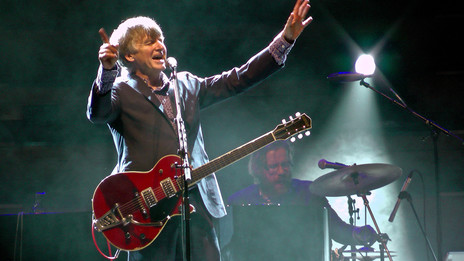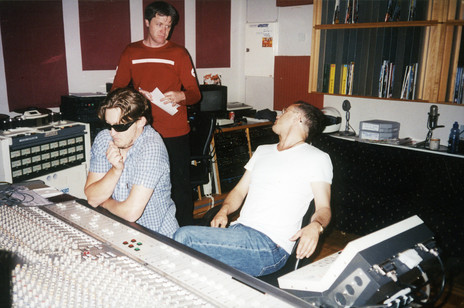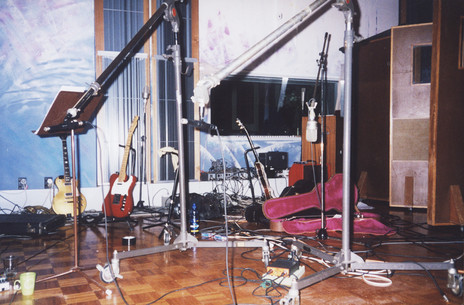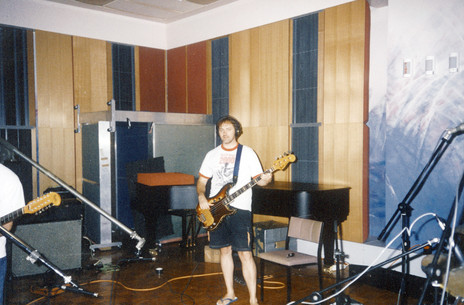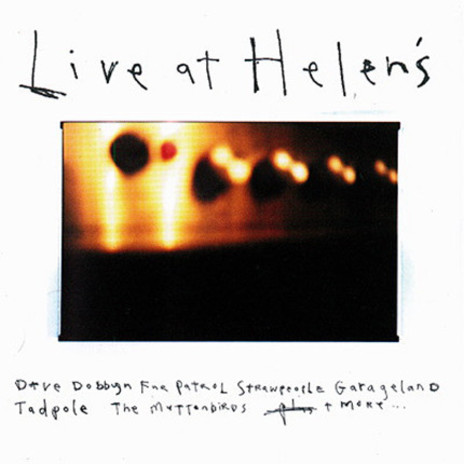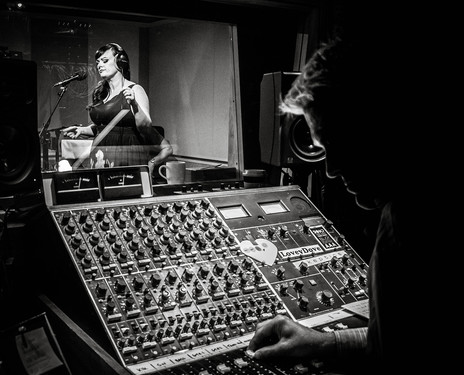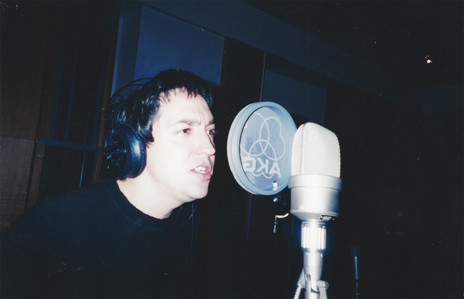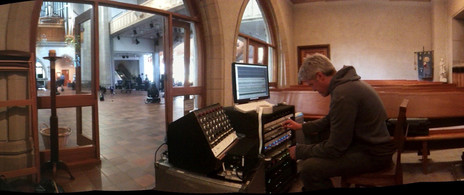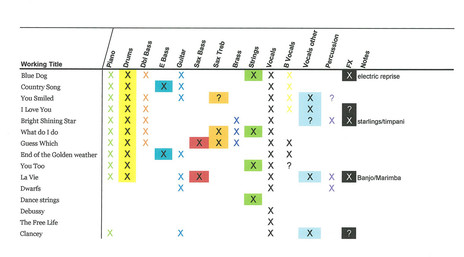The burgeoning scene around Flying Nun took his interest, so he sought permission to record their live shows directly from the sound desk. The Chills were a particular favourite and Upston captured over 30 of their shows – even recording three nights at the Cricketers’ Arms in his hometown of Wellington. Decades later when The Chills released their Secret Box (2001) rarities collection, three of Upston’s recordings appeared, including a song that even Martin Phillipps himself couldn’t recall rehearsing with the band.
Upston’s mother noticed his budding interest in recording and told him about a radio advertisement to be a technical operator for Radio New Zealand. Upston was accepted on his second attempt (in 1985) and his first day at RNZ had him lacing up a reel-to-reel tape recorder. This also gave him access to a few weeks a year of tuition through the Broadcast Training School.
In the meantime, he’d also taken up a side job as a club DJ. “My first experience of a proper DJ was walking into Exchequer Cabaret and hearing Wellington icon DJ Teepee mixing two disco records together. I still remember standing by the door and thinking, ‘Why are these two songs merging into one? How is he doing that?’ I began hanging around by the DJ box and watching how he did it – to me, it was amazing. I ended up filling in for him and then when he left to go to America, I took up a full-time residency.”
Upston decided he could make his DJ sets even more unique by blending in elements that he’d created himself, so he began experimenting with the latest in computer technology – an Apple Mac Classic. He found a software program that could link MIDI equipment and he created sound elements himself then used them to create his own unique remixes of popular tracks.
However working four nights a week as a DJ until the early hours of the morning, then holding down his other job at RNZ was a challenge. At first he juggled this by adjusting his roster at RNZ and then cutting down his residency to three nights a week, but eventually his career as a sound engineer took precedence over his DJ work.
Broadcasting House, Wellington
As Upston soon found himself working on news shows Morning Report (then featuring Kim Hill) and Checkpoint. It took almost a decade of doing this work before Upston could return to his true love of recording music. Fortunately, he was in the perfect location: his workplace was Broadcasting House in Wellington, which had been purpose-built in 1963 for the recording of radio programming (including music performances) and the building had four orchestra-sized studios.
He also took other opportunities as they came up – for example, when his boss, Neil Maddever, was given the job of recording the orchestra for the ENZSO concert (Split Enz songs orchestrated by Eddie Rayner for the NZSO in 1996), he brought Upston along to help. Upston recalls:
“I stood behind the conductor for one of the songs and I’ve never heard anything as gorgeous.”
“I stood behind the conductor for one of the songs and I’ve never heard anything as gorgeous as 70 musicians playing a beautiful piece of music. When I went back to the control room and listened back to the recording, it sounded like it was coming out of a transistor radio in comparison. It wasn’t like we were doing a bad job either – we’d brought vintage mics along for the recording and Neil was doing an amazing job as an engineer – but it just shows the challenge of being an engineer. It’s an endless pursuit to capture what you can hear with your ears using the best equipment you can get your hands on.”
In 1997, Broadcasting House was closed because the site had been allocated for another project (a government services building), so the staff were moved to a building on The Terrace. This was a blow to Upston, since the building was constructed as office space not a recording studio and therefore had much smaller rooms with a more standard roof height, which made it harder to do quality recordings. What’s more, his previous role no longer existed so he either had to move to a lesser job or take redundancy.
Helen Young Studio, Auckland
Meanwhile, in Auckland, there were also changes afoot. RNZ’s previous studio on Durham Street (Auckland’s art-deco Broadcasting House) was demolished in 1990. That year, a new purpose-built studio opened in 1990 (within the new RNZ office space on Cook Street); in charge was Bruce Duskey. It was named “Helen Young” after the woman who ran RNZ’s Concert Programme from 1960 to 1990.
In the mid-1990s, a decision was made to allow it to be hired out for commercial work and studio recordings. A new studio manager position was created to promote this work. Upston was preparing to take redundancy, but instead successfully applied for the job.
He was impressed by the state-of-the-art technology on offer in the studio. For example, it had acoustic panelling that could be controlled by computer, so the sound in the room could be altered depending on what was being recorded, so it could sound even bigger than its size (750 square feet). Upston found that by adjusting the three types of panel – absorption (padding), diffusion (metal fins), and reflection (wood) – he could vary the sound remarkably.
“I had a drum kit in there one day and I was wondering how much effect the panels really had, so I changed them all to absorption and it sounded like the drums were in a closet. The reverb time was usually 1.8 seconds and it went down to under a second.”
The Helen Young Studio was a unique space, and few outside of RNZ knew of its capabilities, but that was about to change with a run of legendary Live At Helen’s performances.
Live At Helen’s
Part of the rationale behind the Live At Helen’s recordings was to show people outside RNZ that high quality work could be produced within the studio. Each session would involve a full live set by a band/artist being recorded and the space was big enough that it could hold an audience of up to 50 people. The run of musicians who took part now looks simply like a list of the biggest local acts active around the turn of the new millennium: Dave Dobbyn, Ardijah, Goldenhorse, Che Fu, Bic Runga, Fur Patrol, Garageland, Pluto, Tadpole.
Some of these acts took the opportunity to record new tracks that hadn’t been released; in some cases, these tracks never again saw the light of day, for example, two tracks recorded by Goodshirt at Helen’s.
stress levels rose when acts turned up with incomplete arrangements of their new tracks
However, it did occasionally raise the stress levels when acts turned up with incomplete arrangements of their new tracks. Upston believes he saw the break-up of at least one band in progress during some of these heated sessions. There were also unfortunate headlines when neighbouring offices complained about marijuana smoke coming through the air-conditioning from the Pluto session. Upston was overseas at the time, but still had to front on behalf of the studio.
Some of Upston’s favourite performances were when he recorded the acts in a more stripped-down mode. Before he moved to Auckland, Upston had seen Fiona McDonald on TV performing the song ‘Porcelain Hands’ alongside a string trio for the launch of the Strawpeople album, Vicarious (1997). He liked it so much that a similar recording was organised to take place at Helen Young, with Victoria Kelly on piano and five string players. He was stunned by the beauty of McDonald’s vocals in this context and she later said to Upston she preferred this version over the album track.
As time progressed, the studio upgraded from the SADiE (recording software focused on radio production) to the more in-demand software, Pro Tools. Upston had only been using it for a week when Shihad – then known as Pacifier – arrived for a session. When guitarist Phil Knight asked for a click track, Upston was initially at a loss (fortunately Knight knew how to do this himself). Nonetheless, this turned out to be one of Upston’s favourite sessions.
“I’m a massive Shihad fan, so it was great to be with them for a day. I’d been in enough studio situations to know that band relationships are extremely tricky and important. So to see the respect that the four of them had for each other was wonderful. I loved it. That’s why they’ve had such success and are still going with the same line-up to this day.”
The quality of the live sessions captured in the studio were such that the best of them were compiled for an album, Live At Helen’s (2001). That year, the studio began to be used by ZM during New Zealand Music Month to record live-to-air sessions with local acts (supported by NZ On Air). These continued the following three years, with Hauraki and Classic Hits joining them in doing this for the years 2003 and 2004 (all shared the same building as RNZ).
However, the end was just around the corner. The building that housed Helen Young Studio on Cook Street had originally been property of RNZ, but in 1996 when the popular music stations (such as ZB and ZM) were split off and made into commercial entities, the location was also sold. The new owners were The Radio Network, a syndicate of Clear Communications and Wilson & Horton. RNZ only rented the space and when the lease expired, they weren’t able to negotiate a new deal that could accommodate their growing staff numbers.
In 2005, RNZ moved two buildings up Cook Street to the corner of Hobson Street and the Helen Young studio was demolished. One of the final sessions was also captured for an album: the Tall Dwarfs album, In The Dying Days Of Helen Young (2005). The final work done in Helen Young was for a compilation album produced by Charlotte Yates, Tuwhare (2005), which featured musicians doing interpretations of poems by Hone Tuwhare (this followed the similar project: Baxter, 2000).
One person who had used Helen Young regularly, with Upston at the desk, was composer/musician Victoria Kelly – especially for film soundtracks including Black Sheep, The Locals, The Irrefutable Truth About Demons, and Magik and Rose. She visited the studio during its final days and told RNZ of her sadness at the closure: “When I came in today, I was looking around and feeling utterly devastated. I’ve done so much work here, it’s such a great studio. It’s a real shame.”
Ironically, the musical live sessions at RNZ actually ramped up soon after. The “NZ Live” sessions on RNZ National started a few months later – they were initially engineered by Ian Gordon and Jeremy Ansell – and continued for over a decade. Upston had no time to mourn the loss of a second world-class studio and instead moved into doing location recordings. He was brought on board to do the NZ Live sessions in 2014 and focused on capturing the best recordings he could in the smaller office spaces of the current building.
Upston as album engineer
Upston’s work at RNZ also led him to work on recordings that weren’t primarily destined for the airwaves. When the Helen Young studio first became available for commercial sessions in the late 90s, the first act Upston helped to record and mix an album there was Auckland lounge kings Peter Stuyvesant Hit List (with Neil Duncan producing), followed soon after by Smoothy.
In the late 90s, Upston also recorded music and did programming and keyboards for his electronica side project, NV, who had a deal with PolyGram. Their single ‘Don’t Make Me Wait’ hit No.9 in 1998 (and their album reached the Top 30), but the group split up when PolyGram was bought out by Universal (though Upston later formed Aerial with singer-keyboardist, Michelle Crompton, and NV’s guitarist Neil Becker).
Around the new millennium, Upston also worked as a sound engineer alongside Chris Chetland on the groundbreaking jazz-electronic album Six Degrees (1999) by Mark de Clive-Lowe, and mixed live albums by Batucada Sound System, and Salmonella Dub with the NZSO.
Upston was recruited to record Bic Runga’s performance with the Christchurch Symphony Orchestra in 2003
Most notably, he was recruited to record Bic Runga’s performance with the Christchurch Symphony Orchestra in 2003. Upston was involved with one of her releases previously: she had recorded a Live At Helen’s session in 1998 and a couple of the tracks became B-sides (she did a second session in 2002).
“Years later, Bic said she had fans coming up to her saying that the CSO album was their favourite record of hers. I think that experience of hearing herself live in front of a band helped inspire her approach for Birds. The idea for that album was everything would be recorded live with no headphones, only monitors as you would have for a live performance.”
Initially, Upston was hired to record demos for Birds (2005) in the practice space where the band had been fleshing out the songs on the top floor of Lopdell House in Titirangi.
“Bic said that she hadn’t found anyone to actually track the record,” recalls Upston. “I went home and my partner (now wife) Emily said to me, ‘why don’t you put your hand up?’ I said, ‘no way!’ But I did finally write to Sony and asked if they would consider me.”
Runga took the producer role and decided it should be recorded at Monte Cecilia House, a 14-bedroom mansion in Hillsborough, Auckland. What’s more, the sessions would take place with the full band playing live. And what a band it was: Neil Finn on piano, Riki Gooch on drums, plus Shayne Carter, Anika Moa, and Anna Coddington on backing vocals. The band were set up in the largest room, but they also took advantage of other spaces in the building. For example, the foyer had a strong reverb (four seconds) so vocals for some tracks were recorded there.
Upston found it an enthralling experience, with long periods of hard work balanced out by having meals supplied and a games room on hand. While Carter might boast in his book Dead People I Have Known of beating Neil Finn at table tennis during these sessions, Upston holds the greater claim of having bested them both!
The album hit No.1 on the charts and was eventually certified 3x platinum (it also dipped into the Australian Top 30). Plus, Upston was awarded Best Engineer at the Music Awards in 2006 for his work.
Upston had an even longer lasting involvement as recording engineer for Anika Moa. After the stresses of recording her first album in the US, Moa took a more relaxed approach to her follow-up, Stolen Hill (2005), by doing sessions in a barn in West Auckland and producing it herself alongside indie musician, Ed Cake (Bressa Creeting Cake). Upston had been called in to help with two of the acoustic songs, as well as recording piano overdubs with Steph Brown, and was then given an even more central role for her next release, In Swings The Tide (2007).
First they set up to record demos for the album at Moa’s house in Western Springs, but Upston took the sessions seriously and brought a full professional set up along with him. Nonetheless, he was surprised by the quality of the recordings.
“The drummer, Nick Gaffney, was concerned how his drums were sounding in the room, so he came into where I was to have a listen and said, ‘I don’t know how you’re doing it, it sounds better in here than it does in the room.’ It was such a validation that I was on the right path. So the first six demos ended sounding really good and everyone said to Anika, ‘why would you go into a studio to re-do these? There’s nothing wrong with them.’”
As a result, Upston subsequently returned to the house to complete the album in the same relaxed atmosphere. In Swings The Tide ended being the first of three Top 10 albums that Upston worked on for Anika Moa, alongside Love in Motion (which he co-produced with Moa in 2010) and her first two Songs For Bubbas albums (2013, 2016).
Upston worked on three Top 10 albums for Anika Moa
As Upston recalls: “The Songs for Bubbas albums were so much fun. For a long time, you had the dichotomy of Anika making endless jokes onstage, but playing quite serious music. I think Songs for Bubbas are a great amalgamation of those two sides of her personality.”
As well as Songs For Bubbas (2019), which reached No.13 in the charts, Upston worked on the Love In Motion covers album (on which the songs were performed by other artists, handpicked by Moa).
A third decade at RNZ
By the start of 2020, Andre Upston could look back on over 300 sessions over the previous two years (recorded in his role as Senior Music Recording Engineer). These included the regular NZ Live sessions, slots for Music 101 (RNZ National) and Upbeat (RNZ Concert), plus shows recorded off-site (for example, over 30 shows held at the Kings Arms; multiple years of WOMAD; and mixing The Adults with the CSO).
The catalogue of music recordings at RNZ was so deep by this stage that the station created a regular Friday night slot on Brian Crump’s Nights programme just to highlight the recordings, many engineered by Upston. It is a remarkable archive that is growing by the week, thanks to his continued fascination with documenting live performances.
“If you can make an artist feel relaxed then you’re most of the way, because they’re going to deliver their best performance. Then your job as an engineer is much easier … These days I do miss the concentration over a long period that’s required to record an album, but I also love that my job involves just capturing moments. Sometimes they’re great, sometimes they’re not. I have a constant turnover of musicians so I’m exposed to an endless range of different people and varying music styles. You wouldn’t get that anywhere else.”
